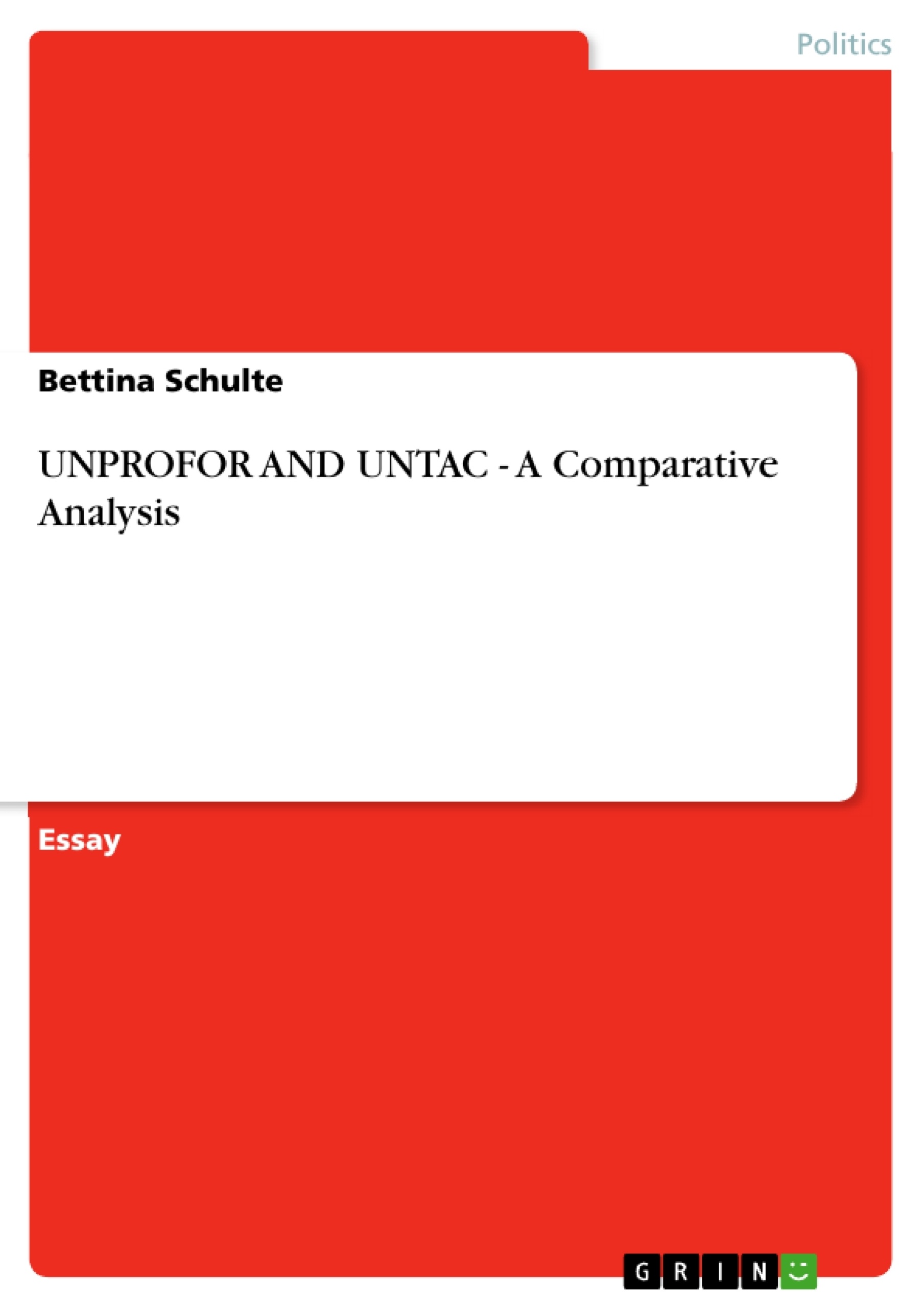The war in Bosnia, and in particular the failure of the international community to put an end to it for 3 long years, has represented a tough anticlimax for the post-Cold War euphoria, envisaging a smooth and peaceful transition towards a functioning collective security system. The gap between ends and means or expectations and capabilities were so wide that the international community undermined the possibility of successful intervention.
UNPROFOR was initially deployed in Croatia, with headquarters in Sarajevo which at the time, early 1992, was before the recognition of its independence. Subsequently, with the escalation of the civil war in Bosnia, it’s mandate extended to Bosnia and as preventative deployment to the FYROM. In addition, UNPROFOR had an operational mandate in Serbia and Montenegro and a liaison presence in Slovenia.1The purpose of this essay is to discuss UN peace keeping operations, specifically, it shall examine the case of UNPROFOR. It shall aim to provide valuable knowledge on the creation of the force, the functions of the force, organization of the force, financing of the force and a final evaluation of the force. In order to succeed in this analytical framework it is adherent to have a background knowledge on the nature of the conflict and how is transformed.
Inhaltsverzeichnis (Table of Contents)
- UNPROFOR
- INTRODUCTION
- MAJOR ACTORS
- INTERNATIONAL RESPONSE
- THE UNPROFOR MISSION
- ACTIVITIES
- THE ROLE OF NATO
- CLOSING REMARKS
- UNTAC
- Creation of the force
- Overview of Cambodia's history
- The establishment of UNTAC
- Legal basis
- Decision making processes
- The function of the Force
- Mandate
- Organisation of the force
- Compositions, Deployment and Financing
- Evaluation
- UNTAC and UNFROFOR: Comparative Analysis
- LEGAL ASPECTS
- INTERNATIONAL ACTORS
- MANDATE
- POST PKO DEVELOPMENTS
- CLOSING REMARKS
Zielsetzung und Themenschwerpunkte (Objectives and Key Themes)
This research essay aims to examine two post-Cold War peacekeeping operations, UNPROFOR and UNTAC, in detail. By comparing and contrasting these operations, the essay seeks to identify both the convergences and divergences within their respective frameworks.
- The complexities of post-Cold War peacekeeping operations
- The challenges of transitioning from a Cold War era to a new era of collective security
- The roles of international actors, including the UN, NATO, and European nations
- The complexities of mandate implementation and resource allocation within peacekeeping operations
- The evolution of peacekeeping operations from a strictly UN-led approach to a more collaborative and multi-layered framework
Zusammenfassung der Kapitel (Chapter Summaries)
The first part of the essay focuses on UNPROFOR, examining its origins in the context of the Bosnian war. It explores the major actors involved, the international response, and the operational aspects of the force, including its mandate, activities, and the role of NATO. The second part of the essay examines UNTAC, exploring its establishment, function, and organization in relation to the Cambodian context. The essay examines the legal basis, decision-making processes, and the mandate of UNTAC. It further explores the force's composition, deployment, and financing. Finally, the essay concludes with a comparative analysis of UNPROFOR and UNTAC, exploring similarities and differences in their legal frameworks, the roles of international actors, and their mandates. The essay also examines post-PKO developments and provides concluding remarks.
Schlüsselwörter (Keywords)
The essay focuses on the themes of peacekeeping, international security, post-Cold War conflict, comparative analysis, UNPROFOR, UNTAC, Bosnia, Cambodia, international actors, mandates, operations, and post-PKO developments. It explores the challenges and complexities of peacekeeping in a post-Cold War era and examines the roles of different international actors in these operations.
- Citation du texte
- Bettina Schulte (Auteur), 2005, UNPROFOR AND UNTAC - A Comparative Analysis, Munich, GRIN Verlag, https://www.grin.com/document/63435



